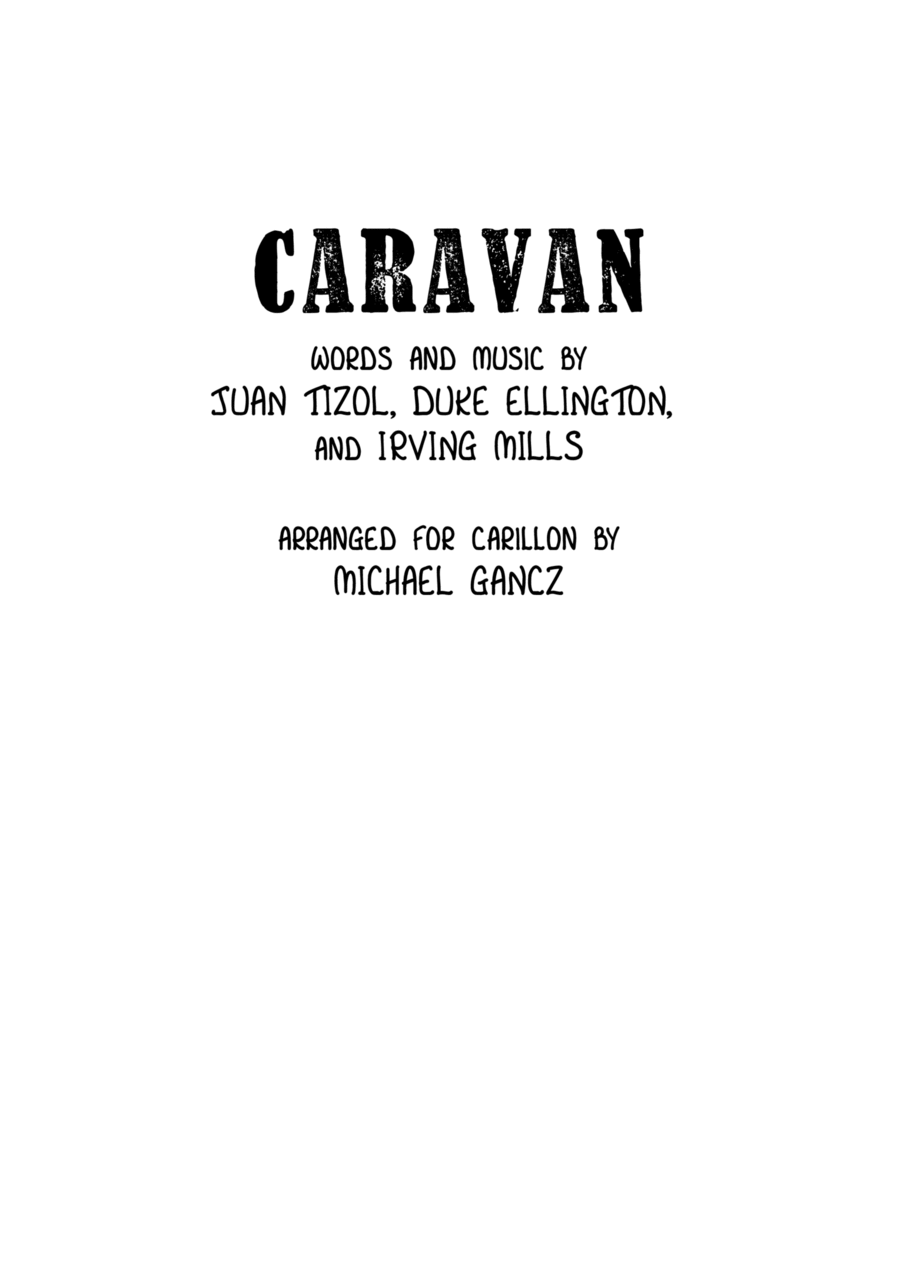Carillon,Instrumental Solo - Level 5 - Digital Download SKU: A0.1301689 By Duke Ellington and his Orchestra. By Duke Ellington, Irving Mills, and Juan Tizol. Arranged by Michael Gancz. 20th Century,Broadway,Film/TV,Jazz,Latin,Musical/Show. Individual part. 8 pages. Michael Gancz #891301. Published by Michael Gancz (A0.1301689). Caravan is one of Duke Ellington's (1899-1974) most famous compositionsâalthough he didn't actually write it. That credit goes to Puerto Rican trombonist Juan Tizol (1900-1984), a member of the Ellington's big band from 1929 to 1944. Tizol composed the theme in 1936 and promptly sold the rights to lyricist Irving Mills for only $25. The song became an instant hitâjazz critic Ted Gioia expllains that it fit perfectly with the musical exoticism that patrons were demanding at [Ellington's] regular gig at the Cotton Club in Harlem. Indeed, much jazz from this era, especially Ellington's, was steeped in Orientalist aesthetics. Although we hear it now as a self-contained musical phenomenon, we must acknowledge this music's problematics even as we continue to celebrate its progressive and revolutionary qualities. Part of my interest in this piece is in its capacity as a vessel in which I can explore my own multiform identity as an expatriate of the Middle East, a carillonist, and a lover of jazz. This arrangement reflects what might happen when these three perspectives collide. Ellington recorded Caravan more than 100 times, and the names of its additional interpreters reads as a history of jazz itself: Thelonious Monk, Art Blakey, Nat King Cole, Dizzy Gillespie, Wynton Marsalis and dozens more all brought their own spin to the tune. What makes it particularly special, though, is its appeal to listeners outside the jazz fandom. The 2014 film Whiplash introduced mass audiences to the song's unique atmosphere and to the genius of the Duke and his sidemen, thanks to an outstanding big band arrangement by John Wasson. My setting of the tune for the carillon recalls both Duke and Tizol's original version and this more recently popular edition.In this arrangement, I hope to highlight the carillon's capacity as a percussion instrument, and to use this as a bridge into the world of jazz. A successful interpretation will focus on groove, stratification of voices, and balance. Try to keep the pedals light!Michael Gancz2023Sources:Gioia, Ted (2012). The Jazz Standards: A Guide to the Repertoire. New York City: Oxford University Press. pp. 58â59.
